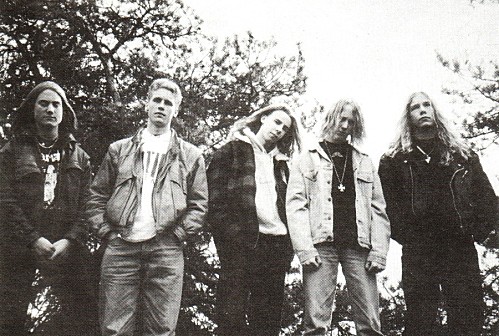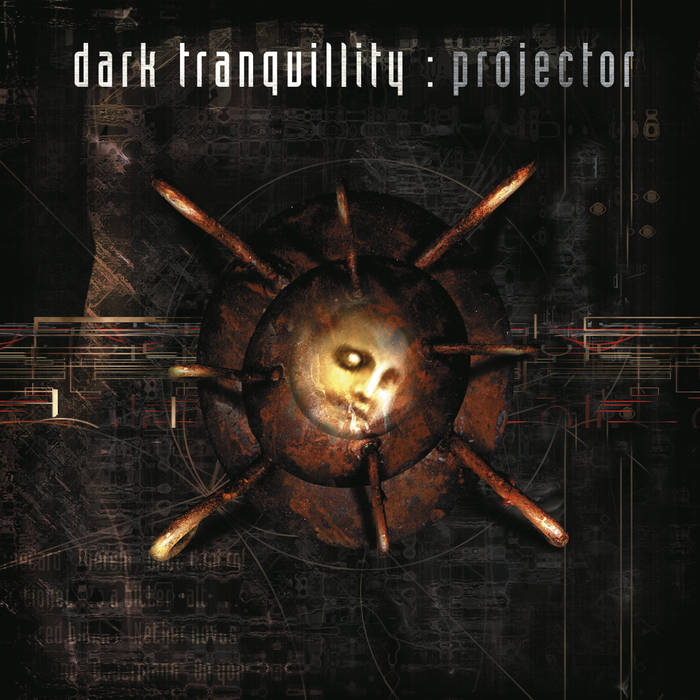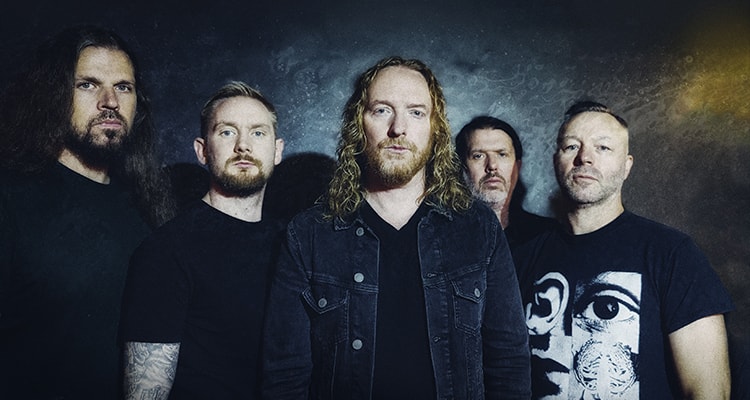“The Gallery”: Dark Tranquillity’s Gothic Monument to Melancholy and Melody
Or how a 1995 Swedish release became one of the greatest Melodic Death Metal albums of all time
In the pantheon of Melodic Death Metal, Dark Tranquillity’s “The Gallery” stands not merely as a milestone, but as a monument. Released in 1995, during a fertile period for the nascent Gothenburg scene, “The Gallery” did not just elevate the band, it redefined the possibilities of extreme music. It was Death Metal, yes, but it was also elegant, poetic, and steeped in introspective gloom. At a time when brutality dominated the underground, Dark Tranquillity offered something more nuanced: emotionally articulate heaviness. Three decades on, “The Gallery” remains one of the most haunting and beloved albums in the genre’s history. It is the sound of a band finding its voice, and in doing so, giving a voice to a new generation of metal artists who craved both intensity and introspection.
A Chamber of Echoes: The Historical Context
Before “The Gallery”, Dark Tranquillity had released their debut album, “Skydancer” (1993), a promising but erratic blend of blackened Death Metal and progressive ambition. That record, though intriguing, was marked by instability, frequent tempo changes, undercooked production, and a rotating cast of contributors. What happened next was a quiet but significant transformation: Mikael Stanne, originally the guitarist and backing vocalist, took over as lead vocalist following the departure of Anders Fridén (who would go on to front In Flames). The move proved pivotal. Stanne’s voice, full of anguish, clarity, and literary cadence, would become the soul of “The Gallery”. In a studio in Gothenburg, under the production of Fredrik Nordström, the band finally crystallized a vision they had long gestated: a fusion of Melodic Death Metal, classical guitar textures, gothic poetry, and a distinctly Scandinavian atmosphere of frozen sorrow.
Song as Canvas: The Sound of “The Gallery”
From the first thunderous seconds of “Punish My Heaven”, it’s clear that “The Gallery” is operating in a league of its own. The dual guitars of Niklas Sundin and Fredrik Johansson do more than riff, they paint. Harmonized leads swirl like brushstrokes in an oil painting, merging aggression with wistful melody. The drumming of Anders Jivarp is surgical, often galloping, but always serving the song's emotional contours rather than brute force.
Mikael Stanne’s vocals are perhaps the album’s most compelling instrument. Unlike many Death Metal frontmen of the era, his growls carry clarity and texture. He doesn’t bark slogans, he delivers soliloquies. His lyrics often read like diary entries written in a crumbling cathedral: dense with metaphor, aching with loss.
Take “Lethe”, named after the river of forgetfulness in Greek mythology. Its opening acoustic passage bleeds seamlessly into one of the album’s most devastating riffs, accompanied by the line: "Lethe, the river of oblivion... Take me away." It's not just a song, it’s an elegy. Other tracks like “Edenspring”, “Silence, and the Firmament Withdrew”, and the title track “The Gallery” showcase the band’s commitment to structure and contrast. Every track feature clean passage, acoustic guitars, or moments of silence that serve as emotional punctuation marks to the surrounding chaos. It’s an album that breathes, even when it’s raging.
Poetic Themes and Gothic Introspection
Lyrically, “The Gallery” marked a sharp divergence from the gore and apocalypse-driven themes of early Death Metal. Stanne’s words are poetic, romantic, tragic. He invokes metaphors of decay, memory, art, and spiritual erosion. The gallery itself, the metaphorical centrepiece, is not just a place of beauty, but of memory, regret, and lost time. Where many albums in the genre speak of death as an external force, “The Gallery” reflects inward. It speaks of the death of innocence, the passing of love, the fragility of human certainty. It is Death Metal made literary, and it works.
The title track, “The Gallery”, is perhaps the most emblematic. A seven-minute journey through shifting tempos, acoustic interludes, and soaring harmonies, it meditates on memory, longing, and the passage of time: "I still behold the ragged rag beneath the silence of the gallery." The image is haunting, and unforgettable.
The Legacy of “The Gallery”
In the years following its release, “The Gallery” would become a benchmark for Melodic Death Metal. While bands like In Flames and At the Gates garnered more immediate commercial attention, it was Dark Tranquillity’s meticulous artistry that aged the most gracefully. Countless bands have cited The Gallery as a direct influence: Insomnium, Omnium Gatherum, Ne Obliviscaris, Be’lakor, and even elements of early Opeth trace their DNA to this release. And within Dark Tranquillity’s own discography, the album remains a touchstone, a sacred axis around which later experimentation would orbit.
In 2014, “The Gallery” was reissued and remastered, cementing its status as a timeless classic. Yet even without the benefits of revisionist polishing, its original 1995 release remains astonishingly powerful, raw in tone but rich in spirit.
Final Reflection: A Timeless Room of Echoes
Listening to “The Gallery” today feels less like revisiting an album and more like stepping into a forgotten sanctuary. The riffs still ring out like stained-glass windows shattering. The vocals still cry out from some far-off chamber of self-reflection. The silence between songs still echoes like footsteps in a ruined hall. It is not a casual record. It asks to be heard, truly heard. But for those who answer that call, “The Gallery” offers a rare kind of experience: not just musical immersion, but emotional absolution. In the world of Melodic Death Metal, many albums are respected. A few are revered. But “The Gallery” that stands alone, eternal, like the marble sculptures and empty frames it so elegantly invokes.
“Projector”: Dark Tranquillity’s Daring Descent into Elegance
Or how one of Gothenburg’s fiercest bands traded fury for finesse, and found beauty in the shadows
In 1999, Dark Tranquillity did something almost no band from the original Swedish Melodic Death Metal wave dared: they changed, Radically, unapologetically, and at the risk of alienating their entire fanbase. After the intricate aggression of “The Mind’s I” (1997) and the near-religious reverence of “The Gallery” (1995), fans expected a further refinement of the band’s signature style. What they got instead was “Projector” a sombre, introspective, and gorgeously restrained album that abandoned genre orthodoxy and rewrote the rules of Melodic Death Metal from the inside out. To this day, “Projector” stands as one of the most daring left turns in metal history. It is an album caught between melancholy and modernism, between the ashes of Extreme Metal and the flicker of gothic romanticism. And somehow, it not only survives, it shines.
From Ferocity to Fragility: Context and Transformation
Released in June 1999 on Century Media Records, “Projector” arrived at a moment of flux in extreme music. Death Metal was fragmenting. Black metal was flirting with orchestration. And the Gothenburg scene, once so revolutionary, was beginning to calcify under the weight of its own imitators. For Dark Tranquillity, evolution wasn’t optional, it was essential. The band had grown restless with the confines of pure melodic death. Rather than replicate the success of “The Mind’s I”, they took a leap into the unknown.
Key to this shift was Mikael Stanne’s clean singing. Though he had always brought emotional depth to his growls, “Projector” marked the first time he stepped fully into the role of melodic vocalist, channelling deep baritone tones that drew comparisons to Depeche Mode, Sisters of Mercy, and Katatonia. It was a move that redefined not only his voice, but the soul of the band. The guitar work, led by Niklas Sundin and Martin Henriksson, shed much of its traditional riff-driven muscle in favour of moody arpeggios, clean tones, and gothic layering. Keyboards, handled by newcomer Martin Brändström, became an essential voice in the arrangements, textural, cinematic, occasionally even jazzy. “Projector” was no longer just a metal album. It was a confession in sonic form.
Songs of Shadow and Structure
From the opening notes of “FreeCard”, it’s clear that “Projector” lives in a different emotional register. The song is brooding, atmospheric, and fragile, with Stanne’s voice not roaring, but whispering, singing, almost breaking. The guitars swell like dying light; the drums are patient. It’s not a song for headbanging, it’s for late nights and inner monologues. Then comes “ThereIn”, one of the band’s most iconic tracks. It’s as catchy as it is mournful, a synth-driven elegy about distance, memory, and silence. When Stanne sings, “A Day without speaking, when silence finds a voice,” it lands like a dagger in the heart. The chorus is Melodic Death Metal reimagined as gothic new wave, and it works shockingly well. But it’s the final track, “On Your Time”, that brings the emotional weight of the album to full bloom. It’s as if all the inner tension, the restraint, the heartbreak, erupts in one final act of devastation. It ends the album not in triumph, but in honest surrender.
Elegance over Extremity: A Risk That Redefined
To say that “Projector” was divisive upon release is an understatement. Some fans hailed it as a brilliant reinvention; others accused the band of selling out or abandoning their roots. In a scene often hostile to vulnerability, Projector dared to be fragile. Yet in hindsight, its bravery is undeniable. It challenged the idea that extreme music had to be fast or loud to be powerful. It introduced a generation of metal listeners to the emotional possibilities of restraint, atmosphere, and poetic vulnerability. And it laid the groundwork for an entirely new strand of Melodic Metal, one that would influence bands like Katatonia, Anathema, Amorphis, and later, Ghost Brigade and Swallow the Sun.
Legacy and Reappraisal
Today, “Projector” enjoys a cult status. Once misunderstood, it is now seen as a turning point not just in Dark Tranquillity’s career, but in the broader story of Modern Metal. It marked the moment the band transcended genre, becoming not just “Melodic Death Metal innovators, but true artists. The album was even nominated for a Swedish Grammy in 2000, a rare nod from the mainstream to a record that dared to explore the void.
In later years, the band would return to heavier territory with albums like “Damage Done” (2002) and “Character” (2005), but they would never entirely abandon the emotional architecture first revealed in “Projector”. Even in their most aggressive moments, that shadow remains, that willingness to feel, to reflect, to risk.
Final Reflection: The Darkest Light
In the annals of metal history, “Projector”
stands as a kind of paradox: a quiet rebellion, a soft revolution. It doesn’t
rage; it mourns. It doesn’t demand your loyalty; it asks for your
understanding. And in doing so, it reveals a depth few metal albums ever dare
to touch. It may not be the loudest album in Dark Tranquillity’s discography,
but it might be the bravest. For in a genre built on defiance, “Projector” is a
rare act of emotional surrender. And in that vulnerability, we find something
stronger than any scream: truth.




Comentários
Enviar um comentário